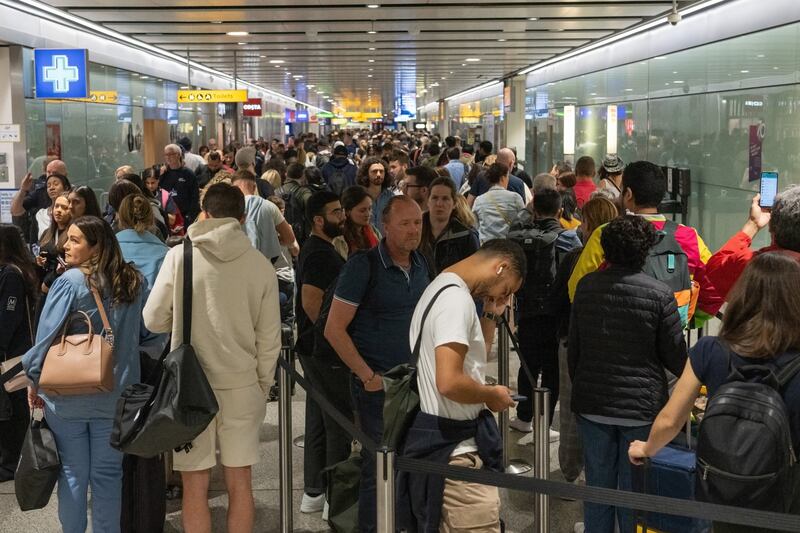Demand for international air travel more than quadrupled in April, despite the war in Ukraine and travel restrictions in China, driving the recovery in overall passenger traffic for the month.
International travel demand rose almost 332 per cent compared with April last year. This was up on the nearly 290 percent annual increase in March 2022, the International Air Transport Association said in its monthly report on Thursday.
Several route areas exceeded pre-pandemic levels, including Europe – Central America, Middle East – North America and North America – Central America, the data showed.
Domestic travel demand fell 1 per cent in April compared with the year-ago period, but down from the 10.6 per cent rise in March, driven entirely by continuing strict travel restrictions in China.
Overall travel demand, measured in revenue passenger kilometres, or RPKs, was up 78.7 per cent annually in April and slightly ahead of the 76 per cent year-on-year increase in March.
“With the lifting of many border restrictions, we are seeing the long-expected surge in bookings as people seek to make up for two years of lost travel opportunities. April data is cause for optimism in almost all markets, except China, which continues to severely restrict travel," said Willie Walsh, Iata's director general.
"The experience of the rest of the world is demonstrating that increased travel is manageable with high levels of population immunity and the normal systems for disease surveillance. We hope that China can recognise this success soon and take its own steps towards normality."
In the Middle East, airlines recorded a 265 per cent year-on-year surge in demand in April, improving from the roughly 253 per cent annual increase recorded in March.
Carriers increased capacity by 101 per cent in April versus the same period last year.
Load factor — a measure of how well an airline can fill available seats — climbed 32.2 percentage points to 71.7 per cent.
Meanwhile, global air cargo demand in April fell and capacity contracted as the effects of the Omicron coronavirus variant in Asia and the Russia-Ukraine war continue to create a challenging operating backdrop, Iata said.
Global demand, measured in cargo tonne-kilometres, fell 11.2 per cent compared with April last year and were down 1 per cent compared with April 2019, Iata said.
"The combination of the war in Ukraine and Covid-19 lockdowns in China have pushed up energy costs, intensified supply chain disruptions and fed inflation. The operating environment is challenging for all businesses, including air cargo," Mr Walsh said.
"But with China easing lockdown restrictions, there is cause for some optimism and the supply/demand imbalance is keeping yields high."
Middle Eastern carriers recorded an 11.9 per cent year-on-year decrease in cargo volumes in April.
"Significant benefits from traffic being redirected to avoid flying over Russia failed to materialise. This is likely due to persisting supply chain issues in Asia," Iata said.






